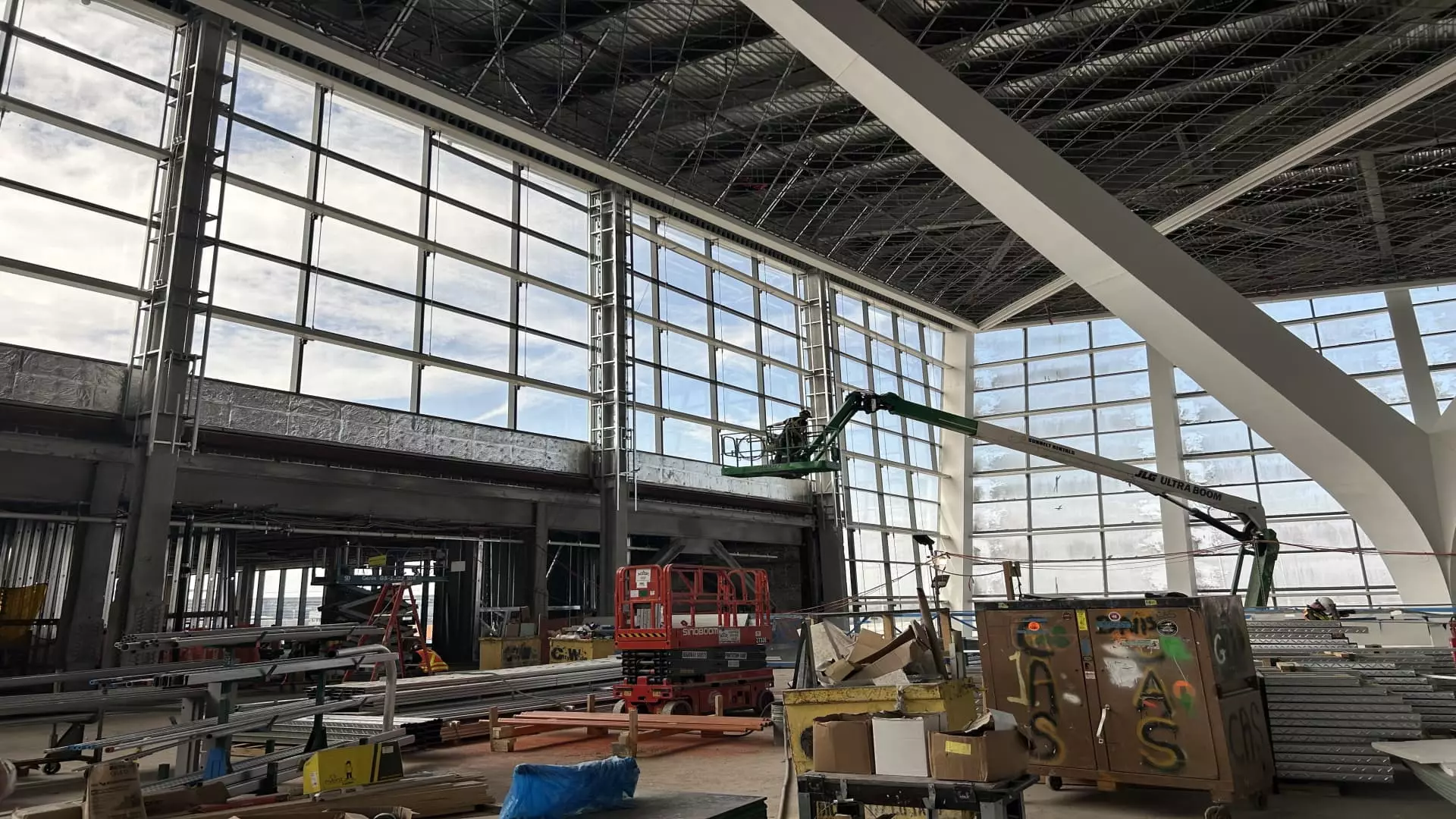The ongoing transformation of John F. Kennedy International Airport’s Terminal 1 is heralded as a monumental leap forward—a $9.5 billion gamble aimed at redefining international travel in New York. While its shiny facade and futuristic design might dazzle onlookers, there’s an undeniable sense that this project, like many before it, is built on lofty promises that risk overlooking core systemic issues. The narrative suggests that this new terminal will revolutionize air travel experience; however, upon deeper scrutiny, it becomes clear that infrastructural upgrades alone cannot fix the foundational problems that have long plagued JFK’s operational efficiency, transportation connectivity, and passenger comfort.
This ambitious overhaul sidesteps the reality that airports are complex socio-technical systems beset with bureaucratic inertia and logistical nightmares. The focus on aesthetics—such as the butterfly-inspired architecture and skylit spaces—may create an alluring environment, but it doesn’t address the persistent congestion, staffing shortages, or outdated customs facilities that continue to frustrate travelers. The overinvestment in new terminals often distracts from broader issues, including systemic underfunding of essential but less glamorous infrastructure like signaling systems, security processing times, and ground transportation. In essence, a shiny new building, no matter how grand, cannot mask the underlying inefficiencies that have historically crippled JFK’s capacity for seamless passenger flow.
Inflated Expectations Versus Real-World Limitations
One of the most striking aspects of JFK’s expansion plans is the emphasis on capacity—anticipating accommodating 14 million passengers annually by 2030. While impressive on paper, these figures are aspirational rather than guaranteed. The airport’s ability to handle increased traffic depends heavily on multiple factors: workforce readiness, operational coordination, and regional infrastructure support. Yet, history teaches us that increasing physical capacity often leads to congestion transfer rather than resolution; new terminals can quickly become bottlenecks without proper administrative and logistical support.
Moreover, the project’s focus on long-range goals risks sidelining more immediate concerns. For instance, passenger experience—often compromised during peak hours—is largely dependent on process efficiencies that cannot be solely fixed through architectural improvements. The planned duty-free shopping innovation, though appealing, is a superficial fix if personnel shortages or security delays remain unaddressed. Beyond that, integrating such enhancements without a comprehensive overhaul of operational processes is akin to putting lipstick on a pig. The real challenge lies in ensuring that these shiny new features translate into tangible improvements in everyday airport operations, not just in promotional materials.
Environmental and Social Costs: An Overlooked Dimension
While the discourse around JFK’s expansion mainly centers on capacity and aesthetics, there is a disturbing tendency to ignore the broader environmental and social implications. The hefty price tag of nearly $10 billion prompts questions about sustainability—how will heightened traffic impact local air quality and noise levels? Does the increased footprint exacerbate congestion around neighboring communities? These are not secondary concerns—they are fundamental issues that impact the very sustainability of the airport’s growth.
Furthermore, such extensive infrastructure projects often marginalize the voices of local residents most affected by construction, noise pollution, and increased traffic. The wealthy travelers and business stakeholders who are expected to benefit most from these upgrades are largely disconnected from these community realities. An airport expansion of this scale risks deepening existing inequalities if the benefits are not equitably shared. The narrative of a seamless, light-filled terminal should not eclipse these vital considerations, which demand more transparent planning and community engagement to ensure that progress does not come at an unjust cost.
A Realist’s Perspective: Is It Worth the Hype?
From a pragmatic standpoint rooted in liberal centrism, the JFK Terminal 1 project embodies both hope and hubris. It aims to propel New York into a new era of international connectivity; however, it also perpetuates tendencies to prioritize grand architectural gestures over utilitarian solutions. While the investment is undoubtedly necessary—airports are crucial gateways in our interconnected world—the execution reveals a skewed focus on aesthetics and capacity expansion rather than holistic improvements.
Ultimately, the success or failure of this ambitious venture hinges on whether the project managers can translate promises into tangible benefits that improve daily operations and passenger satisfaction. If they merely deliver a visually stunning structure while neglecting real-world operational hurdles, the project risks becoming a monument to aspiration rather than a genuine catalyst for change. Real progress requires addressing the systemic inefficiencies, environmental concerns, and social impacts that are often papered over by optimistic forecasts and shiny renderings.
This grand overhaul at JFK should serve as a wake-up call—not just a celebration of new construction, but as a reminder that infrastructure investments must be accompanied by strategic planning, inclusivity, and sustainable practices. Anything less risks repeating the cycle of overpromising and underdelivering that has characterized many “renewal” efforts in America’s aging transportation systems.

